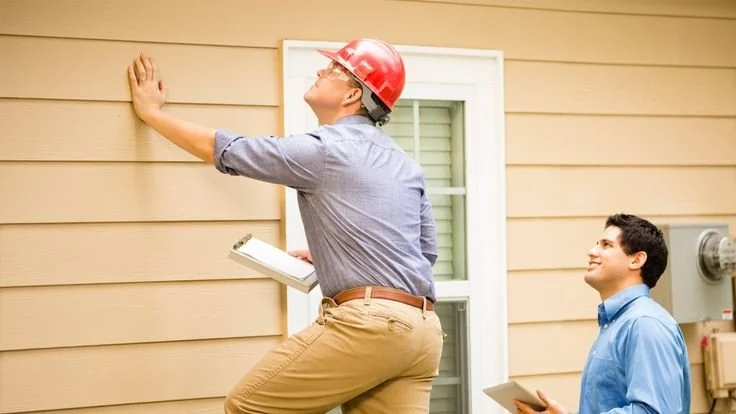The Ultimate Guide to the Home Inspection Before Buying
Buying a home is one of the biggest investments you’ll ever make, and while the excitement of house hunting is undeniable, the process can also feel overwhelming. For many Oklahoma buyers, one of the most confusing—but most important—steps is the home inspection. You might be wondering: What exactly does a home inspection cover? How much weight should I give the results? And what red flags should I watch for?
This guide breaks it all down so you can walk into your next inspection with confidence.
What is a home inspection, and why does it matter so much?
A home inspection is a professional assessment of the property’s condition. In Oklahoma, this typically happens after your offer has been accepted but before closing. The inspector checks major systems and structures such as:
Roof and attic
Foundation and crawl spaces
Plumbing and electrical systems
HVAC units
Windows, doors, and insulation
The inspection isn’t just about finding flaws—it’s about giving you a clear picture of the home’s current state. Knowing this upfront helps you decide whether to negotiate repairs, ask for credits, or in some cases, walk away from the deal. For buyers in the fast-paced Oklahoma City and Edmond markets, understanding the inspection process can also help you move quickly and confidently in competitive situations.
What do inspectors usually uncover during a home inspection in Oklahoma?
Every home has quirks, but in Oklahoma, certain issues tend to appear more often than others. Thanks to our climate and soil conditions, buyers should be prepared for:
Foundation movement: Oklahoma’s expansive clay soil can cause cracks in slabs and uneven floors. Even newer homes aren’t immune.
Roof wear and tear: Hailstorms are a common culprit, so inspectors often find shingle damage or signs of leaks.
HVAC system concerns: With our hot summers and cold winters, heating and cooling systems work hard—sometimes too hard.
Water damage: Whether from heavy rains or plumbing issues, water intrusion is one of the most common inspection findings.
These recurring issues don’t mean you should panic. Instead, they give you a sense of what repairs or updates might realistically come with owning a home in Oklahoma. When paired with a neighborhood guide, understanding these inspection patterns can also help you choose areas that align with your maintenance comfort level.
How should you interpret the inspection report?
When you first receive the inspection report, it can look like a never-ending list of issues. Don’t panic—no home is perfect. The key is learning to separate small cosmetic issues from serious structural or safety concerns.
For example:
Minor concerns: Peeling paint, loose doorknobs, or an outdated water heater.
Major concerns: Foundation cracks, electrical hazards, or roof leaks.
The inspection isn’t a pass-or-fail exam. Instead, it’s a tool for negotiation. You may choose to request repairs, ask for a price reduction, or factor in the cost of fixes yourself. If you’re new to the process, it can help to reference a market update to see how competitive offers are in your area—this often affects how much leverage you have when requesting repairs.
Should you attend the home inspection in person?
Many buyers ask whether they need to be at the inspection. The answer is: yes, if possible. Being present gives you the chance to ask the inspector questions in real time, see problem areas firsthand, and better understand what’s going into the report.
Walking through the home with the inspector also makes it easier to decide whether issues are deal-breakers or just maintenance items you can handle down the road. For example, spotting a small roof leak might feel alarming in writing, but seeing it in person could put it into perspective.
How does a home inspection fit into your overall buying strategy?
The inspection is just one step in the bigger picture of buying a home. Alongside your financing, appraisal, and home valuation tool, it helps you make a smart, informed decision. Skipping or rushing through it can lead to surprises later—like costly foundation repairs or unexpected HVAC replacements.
For Oklahoma buyers, especially those searching in Edmond and the broader OKC metro, inspections are critical. With homes moving quickly, you need to know when to move forward and when to hit pause. The right inspection report gives you confidence that your dream home is more than just a pretty exterior—it’s a sound investment.
Final Thoughts: What does a home inspection really mean for buyers?
A home inspection is more than a formality—it’s your opportunity to fully understand the home you’re about to purchase. For Oklahoma buyers especially, it’s a crucial step in avoiding surprises and protecting your investment. Whether the report uncovers minor fixes or major repairs, having the right knowledge helps you move forward with confidence.
So here’s the question worth asking yourself: What would peace of mind during the buying process be worth to you?
Why trust the Justiz League Real Estate Team?
The Justiz League Real Estate Team has helped countless buyers and sellers navigate the Edmond and OKC metro markets with clarity and confidence. From understanding inspection reports to negotiating repairs, our expertise ensures you don’t face these decisions alone. We live and work in the same neighborhoods you’re considering, so we know what to look for—and how to protect your investment.
Whether you’re buying your first home or selling a property in today’s competitive market, our team is here to guide you every step of the way. If you’re ready to make your next move in Edmond or the greater Oklahoma City area, we’d love to be your trusted partner.


